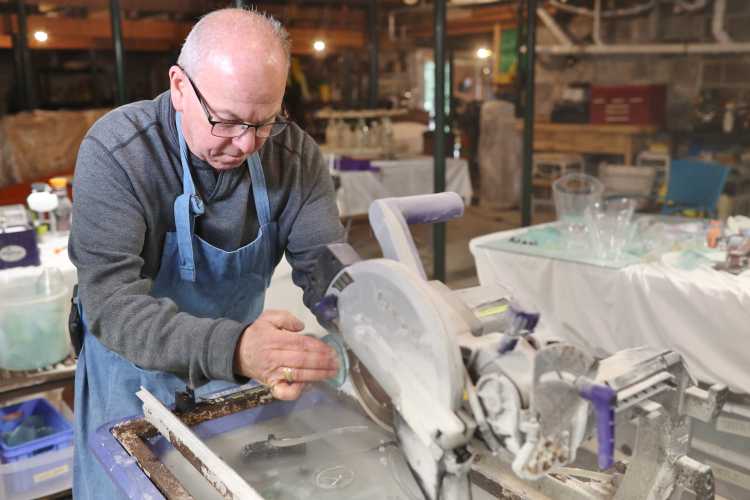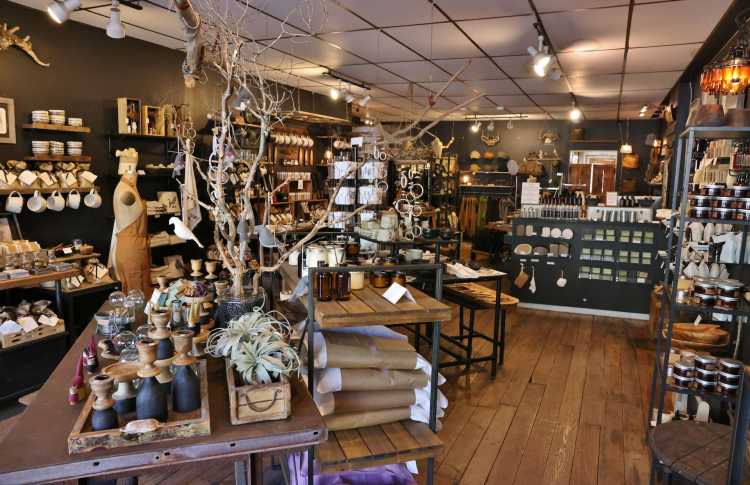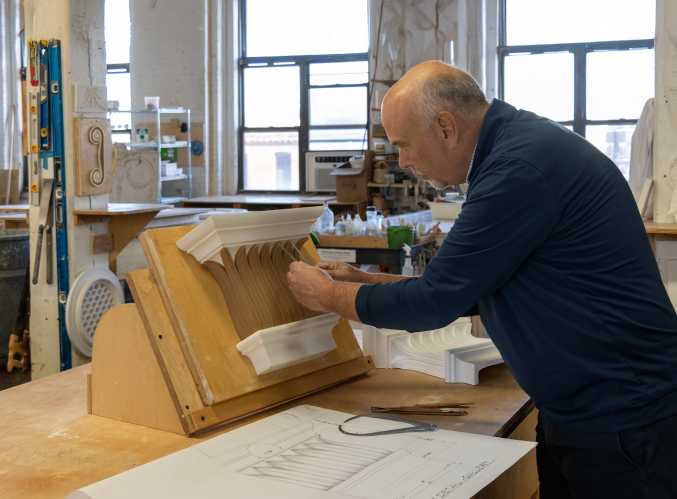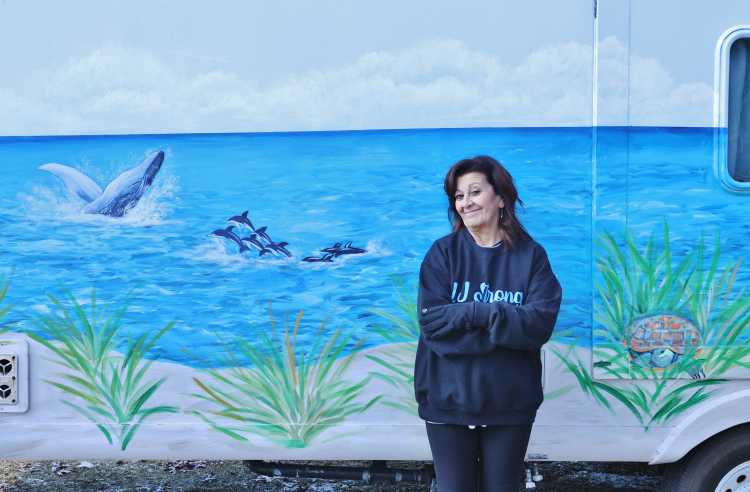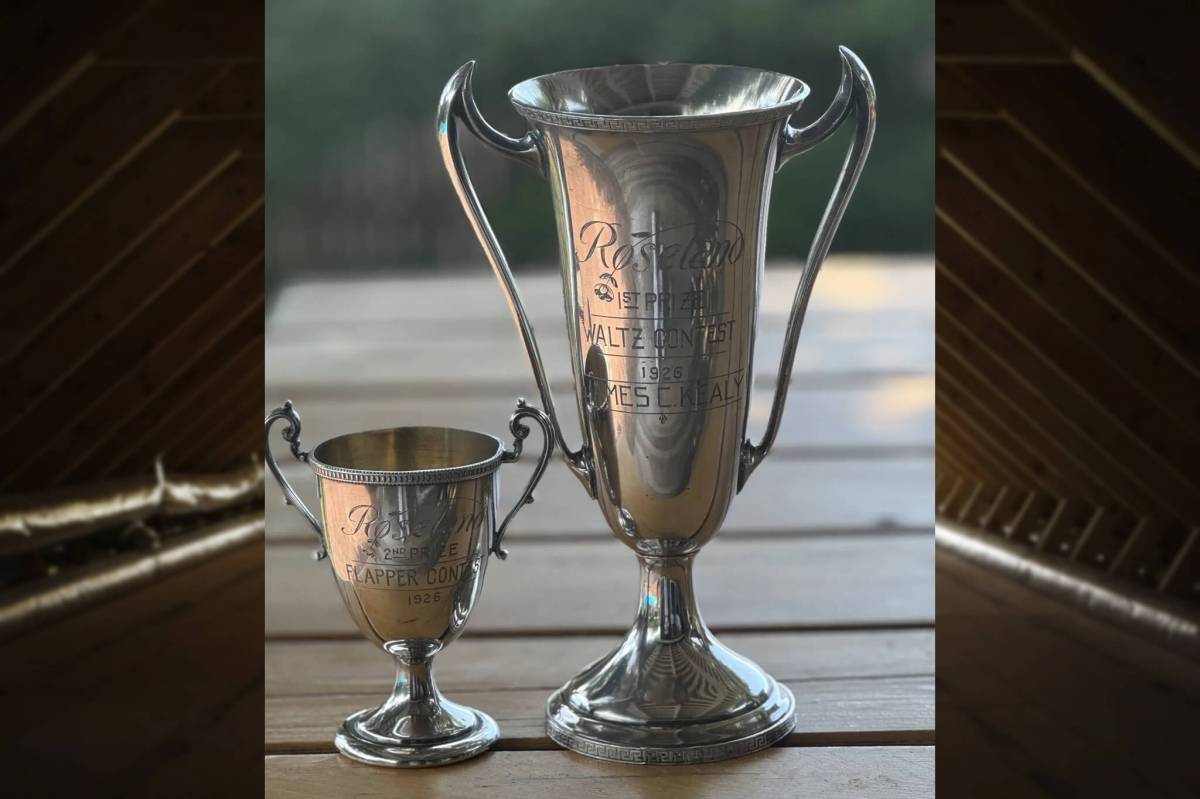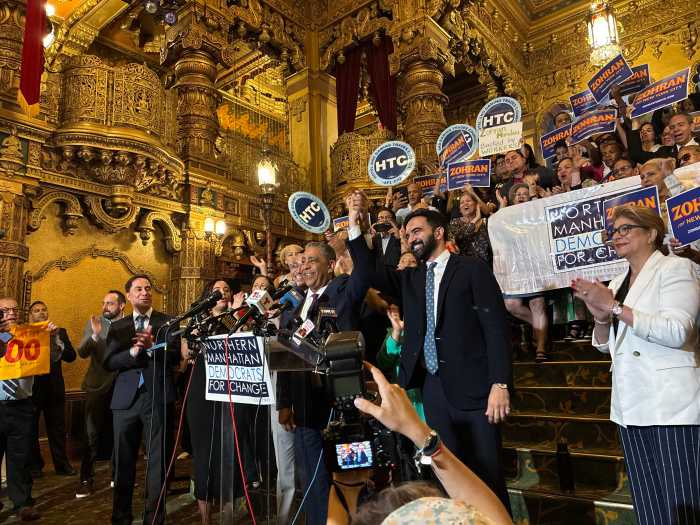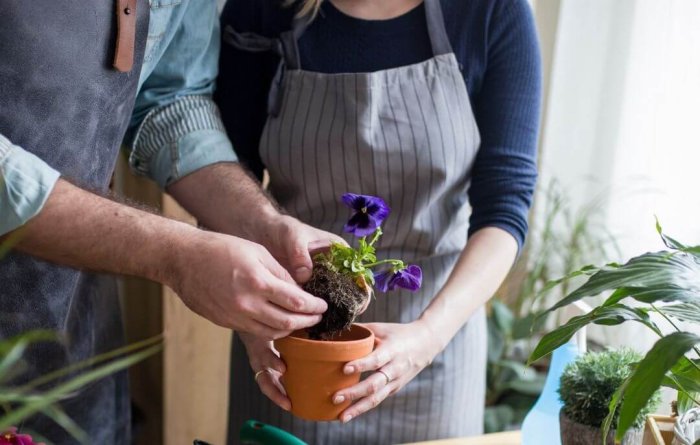Two years ago, Madison Wienckowski was scrolling through Instagram when a photo of an artist’s work using resin stopped her. She was intrigued and inspired by the coastal quality of the pieces.
“I was always fascinated by the ocean and waves, so seeing that level of detail and realism in her work made me want to learn more. That’s when I discovered resin and thought, ‘Hey, let’s give it a shot!,’” she said.
She bought resin, a heat gun, a torch and a mask. “Little did I know resin is extremely expensive and very hard,” she said with a laugh. “My boyfriend and I took the resin out to our backyard and we were horrible.”
Ever tenacious, Wienckowski gave it another try, doing more research on how to work with resin. Fast forward two years, her creations— coasters, clocks, cheeseboards and even cornhole boards—are now functional “oceanscape” works of art. The vibrant hand-poured resin waves look real. Take a close-up snapshot of one of the pieces and you may think you’re looking at a painting or aerial photo of a beach.

Her childhood summers on East End beaches have surely inspired her work. A Smithtown/Hauppauge native, she camped at Hither Hills State Park in Montauk, and later her father built a home in Amagansett. After many summers here, she moved to the East End full-time six years ago and bought a house last year in Springs.
“Even from a young age, I’ve been so obsessed with blue water. When the water is clear it’s so amazing to me.”
Resin is a sticky organic substance exuded by some trees and other plants, such as fir and pine. Synthetic resins are a solid or liquid synthetic organic polymer widely used as the basis of plastics or in building as adhesives or varnishes.
“It’s a very complicated process. You spend a lot of time and money trying to figure it out and learning. It’s all about the right product and practice, it’s a combination of both.”
Wienckowski uses epoxy resin in two parts, the first being the resin and second being a hardener. It’s a time-consuming process, she explained. Once mixed in equal parts, it has a low viscosity and she has about 45 minutes to work with it adding in the pigments.
“Resin is very temperamental,” she continued. This summer has been especially difficult due to the humidity, she added. “If you don’t work fast enough with resin, especially if the temperature isn’t perfect … you find yourself wasting resin or having to mix it all over again.”
Wienckowski heats the resin with a heating gun to manipulate it and create the cells/lacing—“the wave white wash,” as she calls it. Then a torch is used to pop any bubbles that were created while mixing and pouring.
“I’ve always been a crafty person,” she said, but she never had any formal lessons. Wienckowski hadn’t owned a heat gun or a torch before experimenting with resin, but “it wasn’t too out of my realm. I wasn’t nervous to work with these tools,” she said, adding that she’s quite handy. The daughter of a builder, it was instilled in her.
Dust and insects are foes as one might imagine. Flies are a particular nuisance.
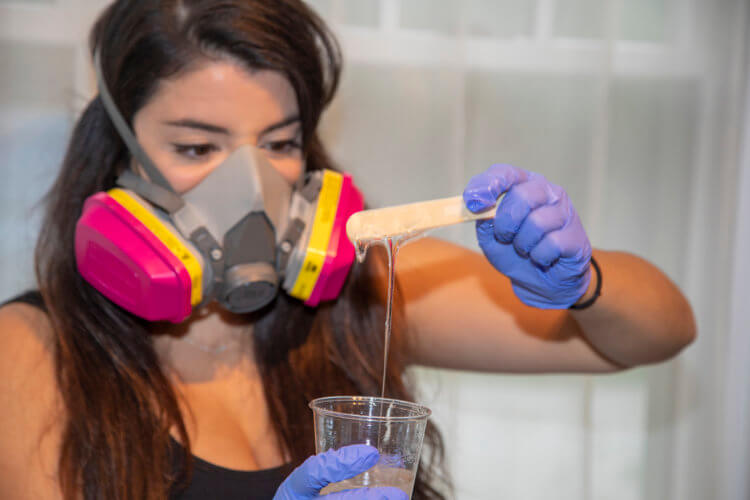
With any resin, Wienckowski said, you can only pour one layer at a time. Depending on how many waves she’s making in her piece, each wave takes one pour, or day. She usually makes two waves, then puts on a clear coat, so that’s three days. “Then I really can’t touch it for three days without the risk of scratching it. I want to say it takes about a week to make and finish.”
She also waits a few days to pack if it’s being shipped to a customer. Until the piece is fully cured, indents can easily be made, tarnishing it.
The canvas she works on is different depending on what she’s making. Some pieces use wood that she cuts and sands. Coasters are usually ceramic or wooden. The faces of the clock are wood, while the circular trim and ticks are metal.
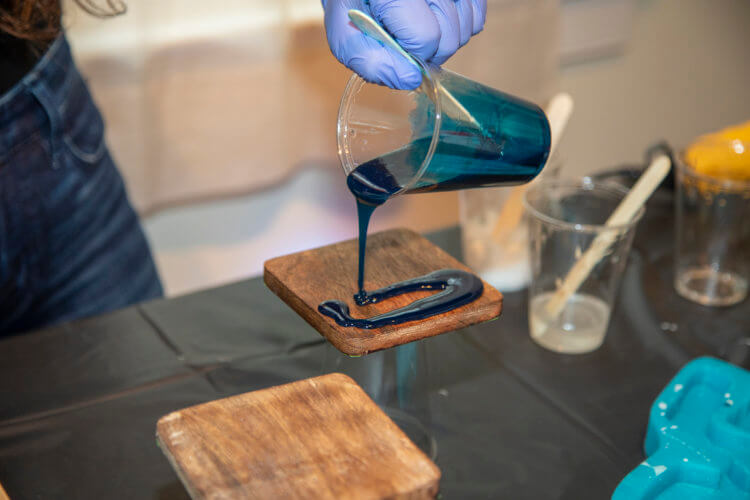
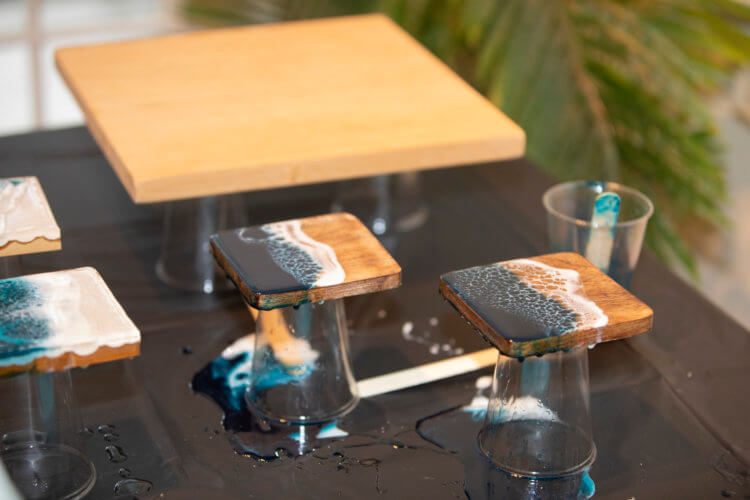
Each piece always comes out with slightly different colors and opacity. “They are all unique and have different depths.”
Wienckowski creates her pieces as often as she can, but her full-time job in marketing and advertising for luxury real estate means this is what she likes to call her side-hustle.
She began, albeit slowly, by making phone cases for friends and family. As she honed her skills, she began to sell them online, and now she sells “to complete strangers across the country and even the world—but I can’t ship internationally.”
The “Caribbean,” a battery-operated 10.5-inch clock in her Island Time Clock Collection, retails for $150.
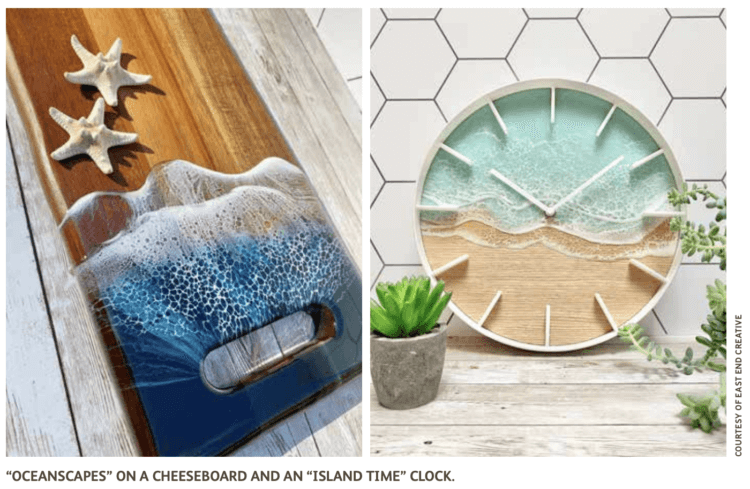
Wienckowski does custom pieces, as well, such as a small table she recently completed. Other items she has sold include a flatware caddy, a Lazy Susan, trays and trinket and ring dishes. Her Instagram page, @eastendcreativebymw showcases her work.
The response and feedback has been more than she could have hoped for. “I don’t consider myself an artist, but people have never seen this type of art before. They tell me they are blown away,” she said.
Instead, “I call myself a creator, but craftsman as well.
This article was featured on the cover of the August issue of Behind The Hedges. Read the digital version here.
Email tvecsey@danspapers.com with further comments, questions, or tips. Follow Behind The Hedges on Twitter, Instagram, and Facebook.


